9 To Zero
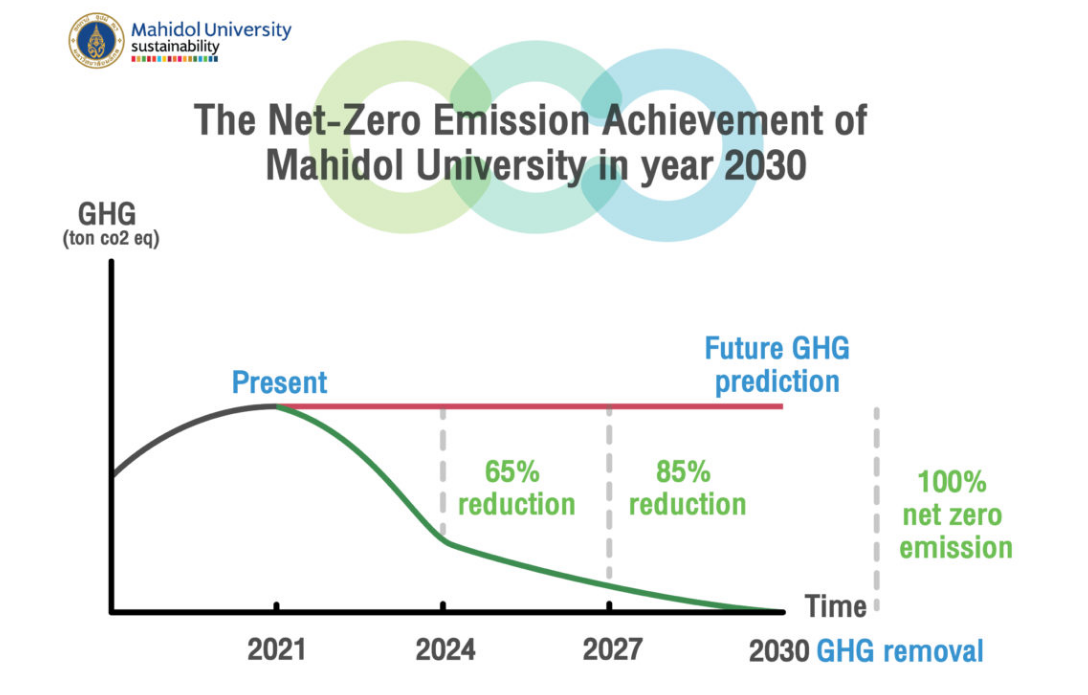


Mahidol University monitors greenhouse gas emissions using the carbon footprint for organization assessment by collecting data on greenhouse gas emissions from both direct and indirect activities, resulting in effective management of the university's greenhouse gas emissions. The following information is collected:
-
 Scope1 Direct Emissions
Scope1 Direct Emissions-
Stationary Combustion such as the burning of fuels to produce electricity, steam and heat in a fixed location
-
Mobile Combustion such as the burning of fuels by institution-owned transportation
-
Fugitive Emissions such as the release of hydrofluorocarbons during the use of refrigerant and air conditioning, the use of chemicals, the use of fertilizer, wastewater treatment, etc.
-
-
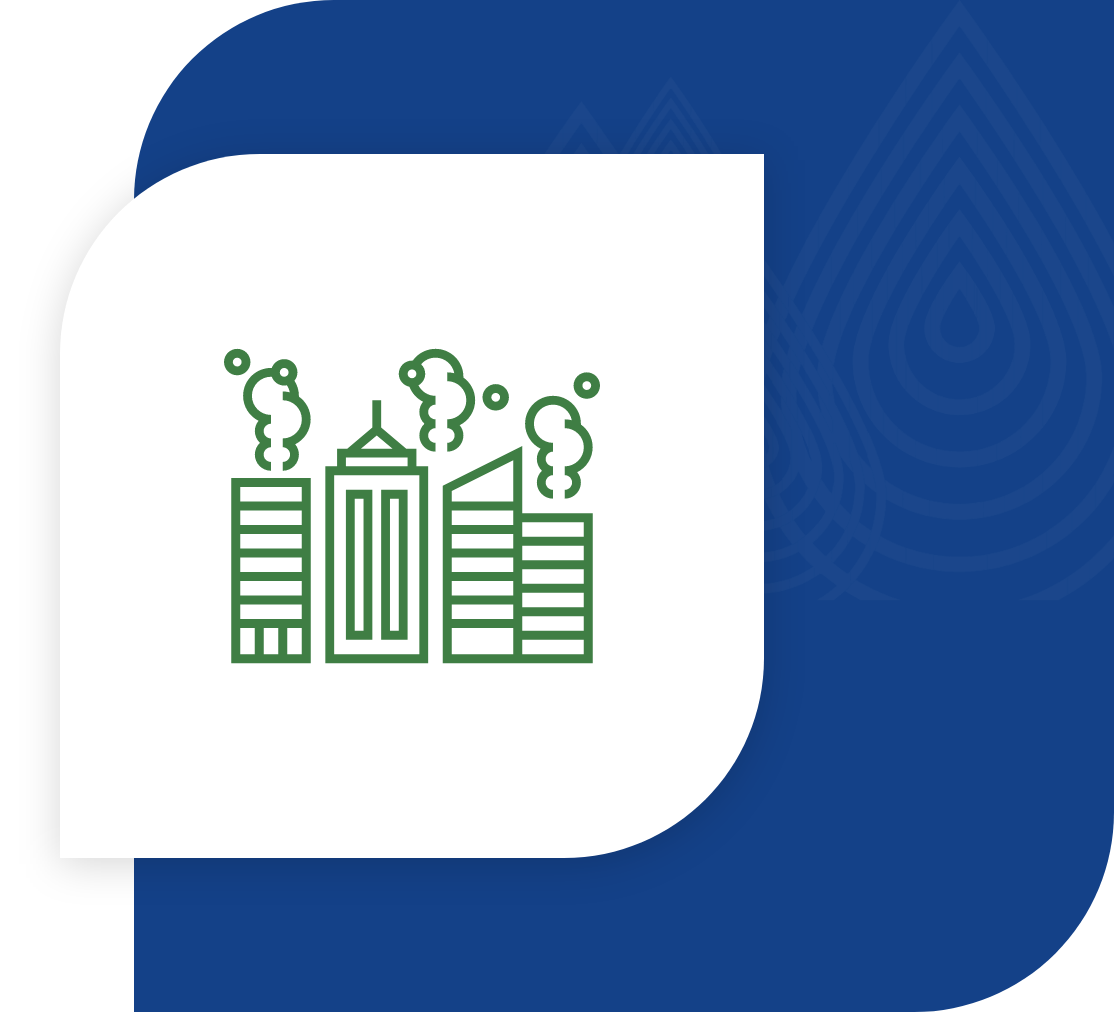 Scope2 Energy Indirect Emissions
Scope2 Energy Indirect Emissionsincludes purchased of electricity for use in the organization.
-
 Scope3 Other Indirect Emissions
Scope3 Other Indirect EmissionsThis category encompasses greenhouse gas emissions resulting from activities not included in Scope 1 and 2.
-
Water consumption
-
Paper usage
-
| Mahidol University's Greenhouse Gas Emissions in the fiscal year 2019-2024 | |||||||
|---|---|---|---|---|---|---|---|
| Source of GHG Emissions | Activity | 2019 | 2020 | 2021 | 2022 | 2023 | 2024 |
|
Scope 1
Direct Emissions |
|
18,951.87 | 5,520.72 | 2,196.96 | 4,248.52 | 6,124.16 | 10,122.60 |
|
Scope 2
Energy Indirect Emissions |
Energy Consumption | 163,697.78 | 161,384.88 | 155,949.05 | 164,732.59 | 172,442.14 | 179,588.18 |
|
Scope 3
Other Indirect Emissions |
Water consumption | 3,814.22 | 3,792.52 | 3,376.18 | 3,691.92 | 3,922.94 | 4,347.50 |
| Paper Consumption | 83.70 | 313.69 | 107.26 | 786.24 | 789.87 | 621.11 | |
| Total (ton CO 2 e) | 186,547.57 | 171,011.82 | 161,629.45 | 173,459.27 | 183,279.10 | 194,679.39 | |
-
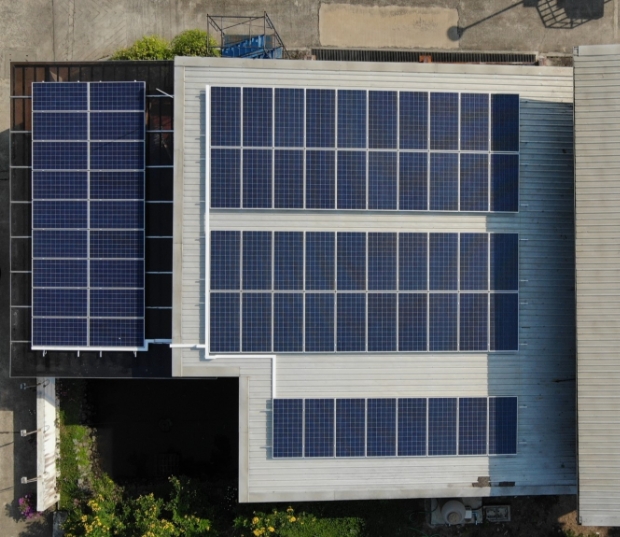 Step 1: Renewable energyThe promotion of renewable energy usage within the campus to reduce electricity generated from carbon dioxide and other greenhouse gas emissions that are produced during the production of electricity. The university carefully considers the use of renewable energy on campus by taking topography, building, and climate characteristics into account, so that solar energy-generated electricity was installed. Solar panels are installed in many buildings such as in the Faculty of Medical Technologies, Wastewater Treatment Plant, and Chakri Naruebodin Medical Institute, Faculty of Medicine, Ramathibodi Hospital. This matter has been processed to cover the campus area as much as possible.
Step 1: Renewable energyThe promotion of renewable energy usage within the campus to reduce electricity generated from carbon dioxide and other greenhouse gas emissions that are produced during the production of electricity. The university carefully considers the use of renewable energy on campus by taking topography, building, and climate characteristics into account, so that solar energy-generated electricity was installed. Solar panels are installed in many buildings such as in the Faculty of Medical Technologies, Wastewater Treatment Plant, and Chakri Naruebodin Medical Institute, Faculty of Medicine, Ramathibodi Hospital. This matter has been processed to cover the campus area as much as possible. -
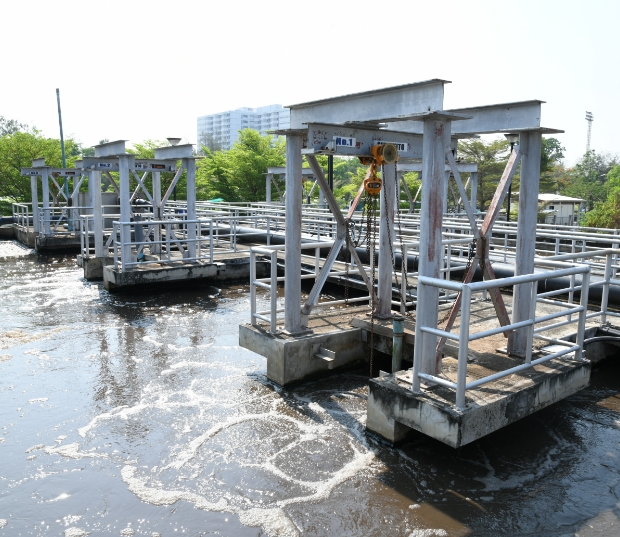 Step 2: Resources efficiencyEncourage all departments to use resources efficiently while raising awareness and cultivating conscious minds for stakeholders of the university to continuously cooperate and create circulation of resources within the system together with sufficient waste management. All of these would reduce greenhouse gases emission. Moreover, effective resource usage could start with yourself or the use of technology, for example:- Raise awareness and consciousness about resource usage such as using both sides of paper, minimizing use of paper, promoting online conference or e-meeting, promoting energy and water conservation campaign, etc.- Water recycling system is designed for the reuse of treated wastewater such as lowering water cost, watering plants, washing vehicles, etc.
Step 2: Resources efficiencyEncourage all departments to use resources efficiently while raising awareness and cultivating conscious minds for stakeholders of the university to continuously cooperate and create circulation of resources within the system together with sufficient waste management. All of these would reduce greenhouse gases emission. Moreover, effective resource usage could start with yourself or the use of technology, for example:- Raise awareness and consciousness about resource usage such as using both sides of paper, minimizing use of paper, promoting online conference or e-meeting, promoting energy and water conservation campaign, etc.- Water recycling system is designed for the reuse of treated wastewater such as lowering water cost, watering plants, washing vehicles, etc. -
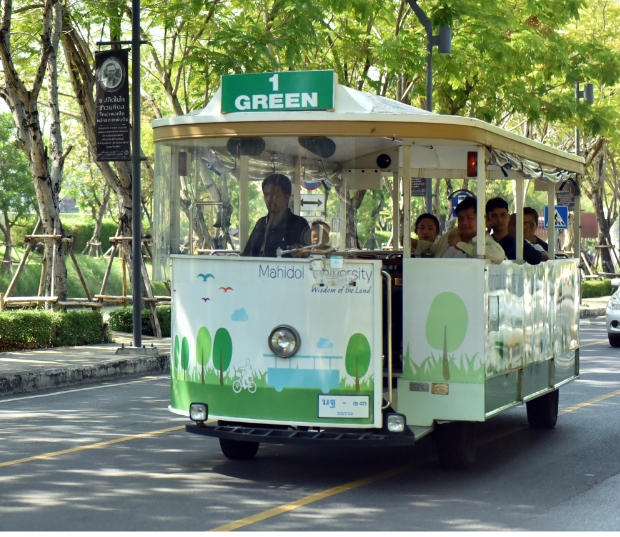 Step 3: Clean Energy for TransportationEnvironmental-friendly transportation, both inside and outside the campus, is promoted and supported in order to gain cooperation from organizations to continuously modify, adapt, and operate. Other than the overall greenhouse gas reduction, this could also reduce the production of particulate matters 2.5 (PM 2.5), for example:- Improving campus transport routes to encourage walking and cycling.- Promoting public transits in the campus including shuttle buses, trams and bicycles.- Changing the fuel consumption pattern in university vehicles with clean energy.- Engine upkeep for improved efficiency.
Step 3: Clean Energy for TransportationEnvironmental-friendly transportation, both inside and outside the campus, is promoted and supported in order to gain cooperation from organizations to continuously modify, adapt, and operate. Other than the overall greenhouse gas reduction, this could also reduce the production of particulate matters 2.5 (PM 2.5), for example:- Improving campus transport routes to encourage walking and cycling.- Promoting public transits in the campus including shuttle buses, trams and bicycles.- Changing the fuel consumption pattern in university vehicles with clean energy.- Engine upkeep for improved efficiency. -
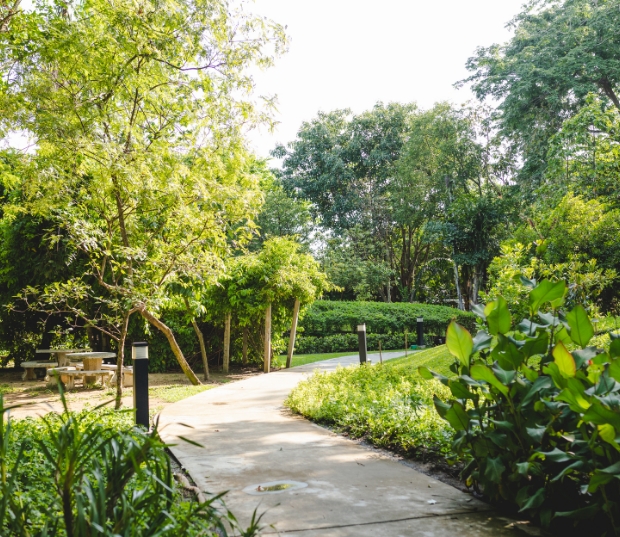 Step 4: Green Area for Carbon RemovalGreen spaces are preserved both within and outside the building and in common areas around the campus such as expanding green areas in abandoned areas, and vertical and indoor gardening. Furthermore, the university has a study on greenhouse gases absorption by trees on four campuses: including Salaya, Kanchanaburi, Nakhonsawan and Amnatcharoen. This study aims to quantify the amount of carbon stored in trees in order to provide baseline data for conservation and land use. The university has green spaces that are open to everyone for leisure or beneficial use, as follows: The university not only cares for and expands green spaces, but also encourages all faculties to focus on growing green through projects or activities as well as promoting understanding of sustainable area management and land sharing as follows:- Gardening Contest Project- Planting to Capture Carbon Project- Ruampol Khon Wad Tonmai Project
Step 4: Green Area for Carbon RemovalGreen spaces are preserved both within and outside the building and in common areas around the campus such as expanding green areas in abandoned areas, and vertical and indoor gardening. Furthermore, the university has a study on greenhouse gases absorption by trees on four campuses: including Salaya, Kanchanaburi, Nakhonsawan and Amnatcharoen. This study aims to quantify the amount of carbon stored in trees in order to provide baseline data for conservation and land use. The university has green spaces that are open to everyone for leisure or beneficial use, as follows: The university not only cares for and expands green spaces, but also encourages all faculties to focus on growing green through projects or activities as well as promoting understanding of sustainable area management and land sharing as follows:- Gardening Contest Project- Planting to Capture Carbon Project- Ruampol Khon Wad Tonmai Project -
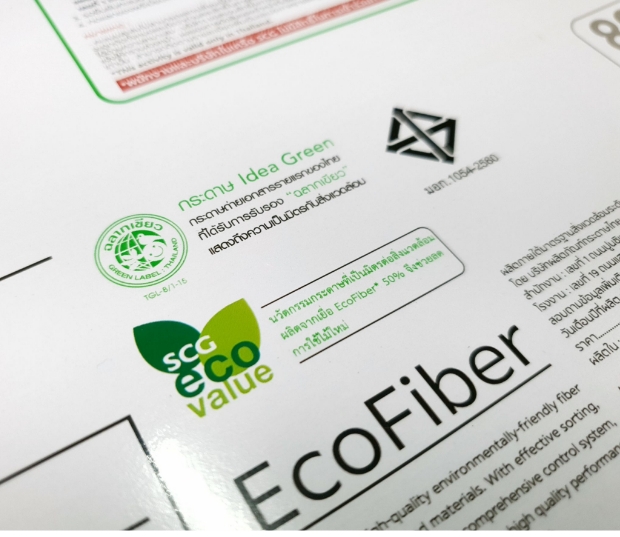 Step 5: Green ProcurementEncourage environmentally friendly procurement and services for every organization while continuously adding percentage of inventory and service list to be more environmentally friendly which would reduce impact on the environment as well as is a way to urge the manufacturers or service providers to develop their production process in response to reducing the amount of greenhouse gases.Mahidol University has set the green procurement guideline according to the government’s guideline in supporting domestic production. There are list of green inventory and service by the Department of Pollution Control for a total of 37 items includes printing paper, liquid paper, fluorescent lamp, furniture, tissue paper, battery, whiteboard marker, photocopier, printer, ink cartridge, building paint, document envelope, document folder, document storage box, vehicles, lubricant, fuel, cleaning services, photocopier rental service, and hotel service.
Step 5: Green ProcurementEncourage environmentally friendly procurement and services for every organization while continuously adding percentage of inventory and service list to be more environmentally friendly which would reduce impact on the environment as well as is a way to urge the manufacturers or service providers to develop their production process in response to reducing the amount of greenhouse gases.Mahidol University has set the green procurement guideline according to the government’s guideline in supporting domestic production. There are list of green inventory and service by the Department of Pollution Control for a total of 37 items includes printing paper, liquid paper, fluorescent lamp, furniture, tissue paper, battery, whiteboard marker, photocopier, printer, ink cartridge, building paint, document envelope, document folder, document storage box, vehicles, lubricant, fuel, cleaning services, photocopier rental service, and hotel service. -
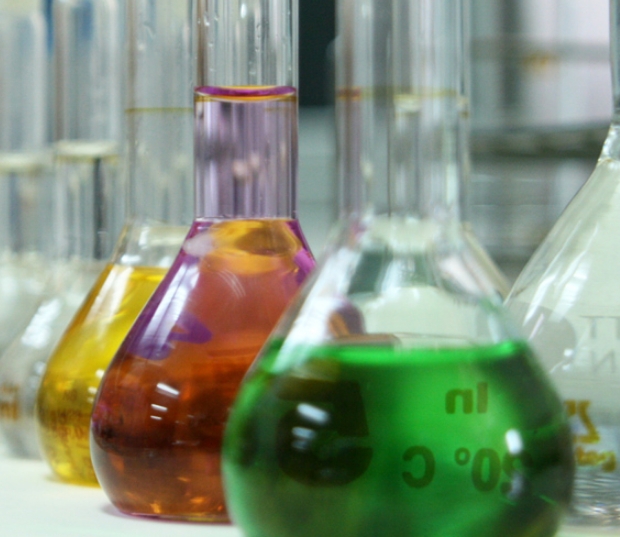 Step 6: Research and Technology for a Carbon Capture and ReductionMahidol university supports and encourage research on innovative and new technology that could promote carbon dioxide reduction or capture in the atmosphere. Additionally, knowledge enhancement and development are promoted among academics and students to practically apply it in both national and international levels.
Step 6: Research and Technology for a Carbon Capture and ReductionMahidol university supports and encourage research on innovative and new technology that could promote carbon dioxide reduction or capture in the atmosphere. Additionally, knowledge enhancement and development are promoted among academics and students to practically apply it in both national and international levels. -
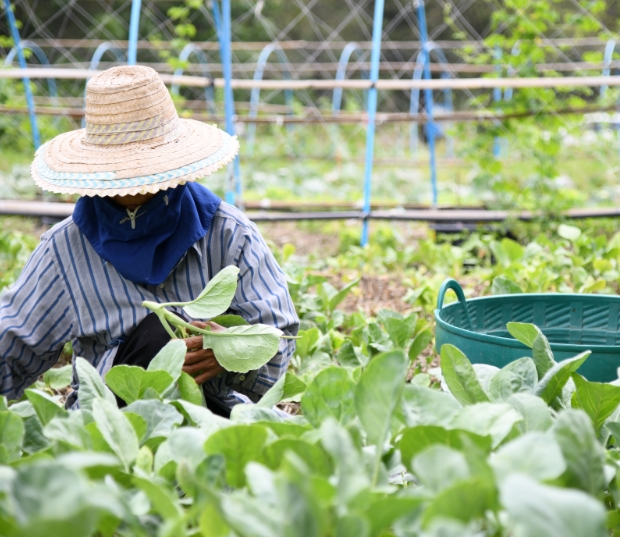 Step 7: Plant-based ConsumptionMahidol University places importance on good health. Therefore, we support and promote the consumption of plant-based products. It encourages staff and students to choose to consume Plant-Based food, emphasizing the consumption of plants, vegetables, and fruits instead of meat. through the symposium in the topic of Behavioral Changes for Sustainable Consumption on world environment day and adding plant-based menus in university’s cafeteria. As a result, eating plant-based foods will help reduce the environmental impact of greenhouse gas emissions that cause climate change.
Step 7: Plant-based ConsumptionMahidol University places importance on good health. Therefore, we support and promote the consumption of plant-based products. It encourages staff and students to choose to consume Plant-Based food, emphasizing the consumption of plants, vegetables, and fruits instead of meat. through the symposium in the topic of Behavioral Changes for Sustainable Consumption on world environment day and adding plant-based menus in university’s cafeteria. As a result, eating plant-based foods will help reduce the environmental impact of greenhouse gas emissions that cause climate change. -
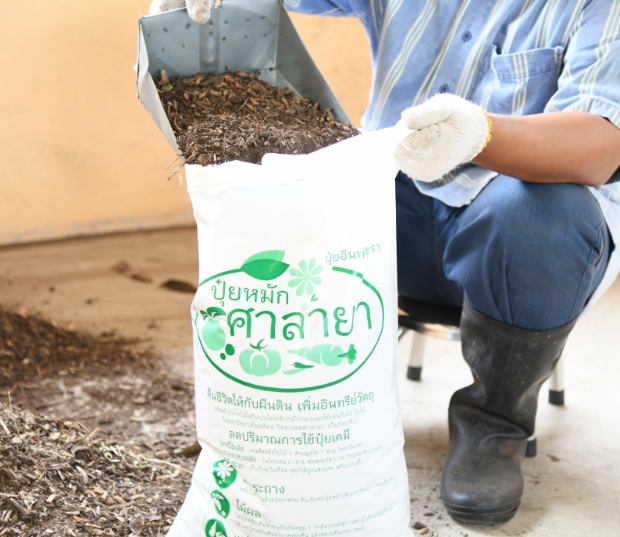 Step 8: Zero Waste to LandfillMahidol University promotes an effective waste management system according to the 3Rs (Reduce, Reuse, and Recycle) and awareness of resource utilization and efficiency as well as increasing the value of waste generated in order to reduce the amount of waste from the beginning. There has been continuous action, as follows:- Automatic Water Dispensers were installed in common areas around the campus. This to encourage the use of personal cups in order to reduce plastic waste from drinking water packaging.- MU Refill Station is environmentally friendly typically serves as a location where individuals can refill their reusable containers with various products such as dishwashing liquid, laundry detergent, softener, shampoo, soap and etc.- Mahidol No Plastic is a campaign on reducing use of plastic.- Recycle Waste Bank was initiative to encourage waste segregation, recycling and proper waste management to reduce waste in landfills. There are 16 various types of recycled waste which will purchase from members and deposit money in recycled waste bank accounts.- Humus Production is the processing of organic such as branches, leaves, and yard debris from upkeep of the university’s landscape.
Step 8: Zero Waste to LandfillMahidol University promotes an effective waste management system according to the 3Rs (Reduce, Reuse, and Recycle) and awareness of resource utilization and efficiency as well as increasing the value of waste generated in order to reduce the amount of waste from the beginning. There has been continuous action, as follows:- Automatic Water Dispensers were installed in common areas around the campus. This to encourage the use of personal cups in order to reduce plastic waste from drinking water packaging.- MU Refill Station is environmentally friendly typically serves as a location where individuals can refill their reusable containers with various products such as dishwashing liquid, laundry detergent, softener, shampoo, soap and etc.- Mahidol No Plastic is a campaign on reducing use of plastic.- Recycle Waste Bank was initiative to encourage waste segregation, recycling and proper waste management to reduce waste in landfills. There are 16 various types of recycled waste which will purchase from members and deposit money in recycled waste bank accounts.- Humus Production is the processing of organic such as branches, leaves, and yard debris from upkeep of the university’s landscape. -
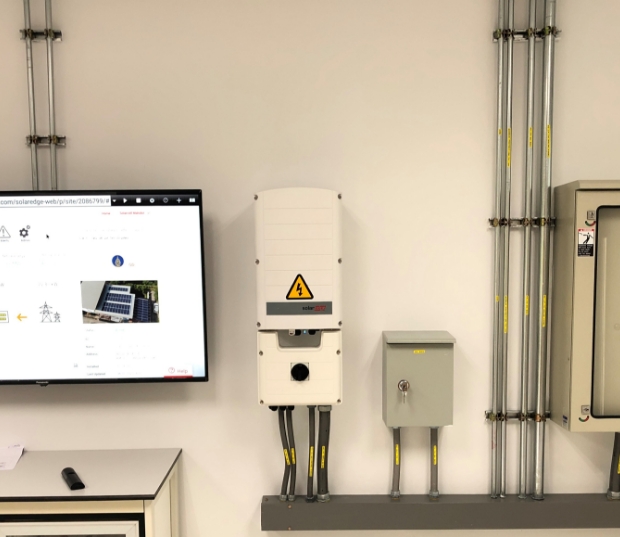 Step 9: GHGs Monitoring and ImprovementMahidol University regularly monitors greenhouse gas emissions reductions through the MU-ECODTA program in order to inform faculty about the quantity of greenhouse gas emissions, allowing them to set a target for reducing greenhouse gas emissions. The university has pushed greenhouse gas monitoring technology to its faculties and urged them to obtain carbon footprint for organization certification from Thailand Greenhouse Gas Management Organization (Public Organization).Furthermore, Mahidol University has participated in the Thailand Carbon Neutral Network (TCNN) and Race to Zero for Universities and Colleges to encourage cooperation in coping with impacts of climate change from the university’s activity on greenhouse gas emissions.
Step 9: GHGs Monitoring and ImprovementMahidol University regularly monitors greenhouse gas emissions reductions through the MU-ECODTA program in order to inform faculty about the quantity of greenhouse gas emissions, allowing them to set a target for reducing greenhouse gas emissions. The university has pushed greenhouse gas monitoring technology to its faculties and urged them to obtain carbon footprint for organization certification from Thailand Greenhouse Gas Management Organization (Public Organization).Furthermore, Mahidol University has participated in the Thailand Carbon Neutral Network (TCNN) and Race to Zero for Universities and Colleges to encourage cooperation in coping with impacts of climate change from the university’s activity on greenhouse gas emissions.
